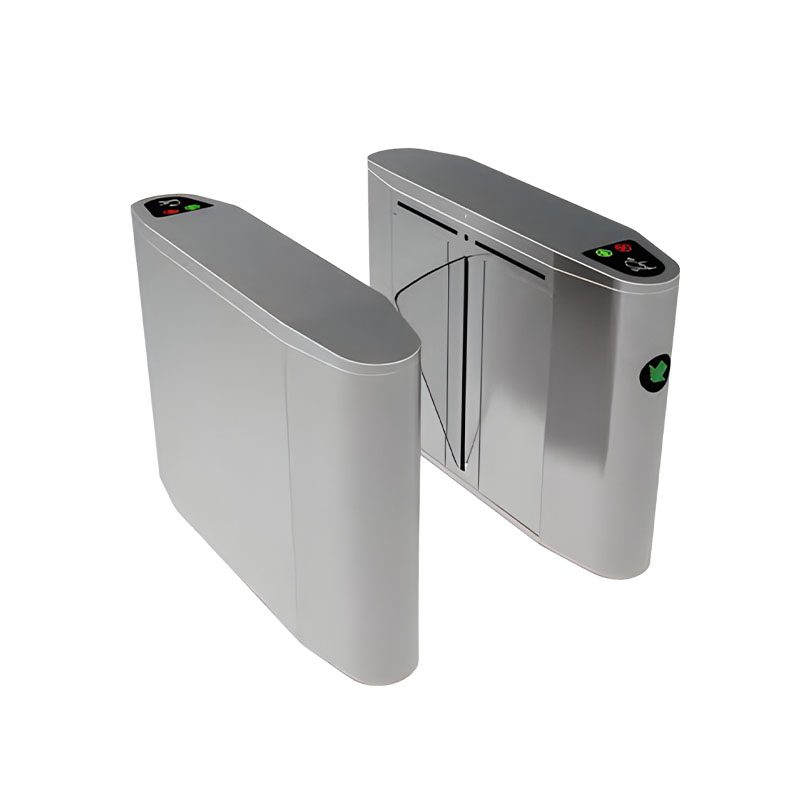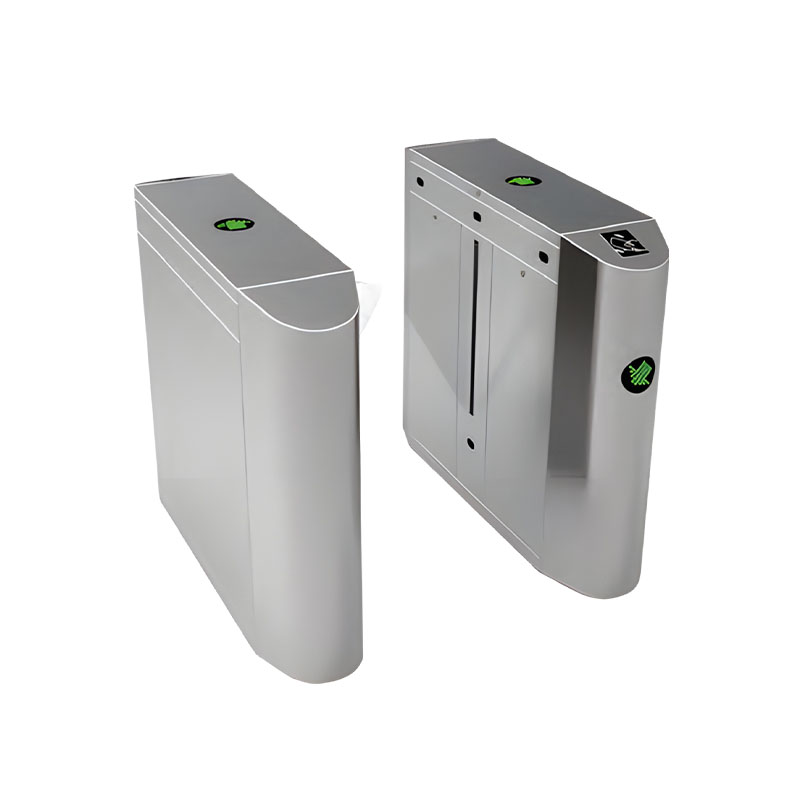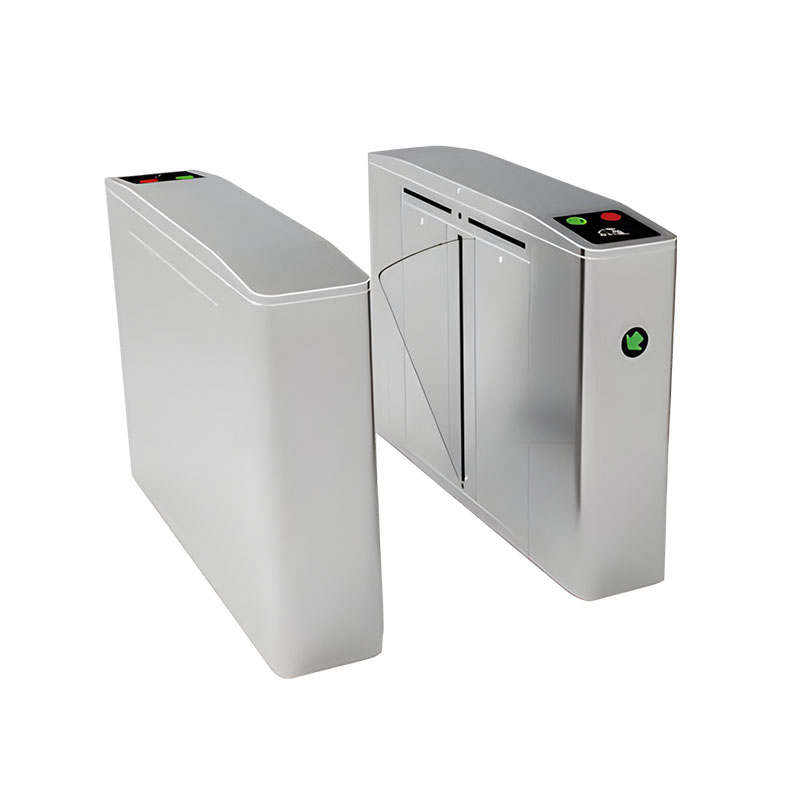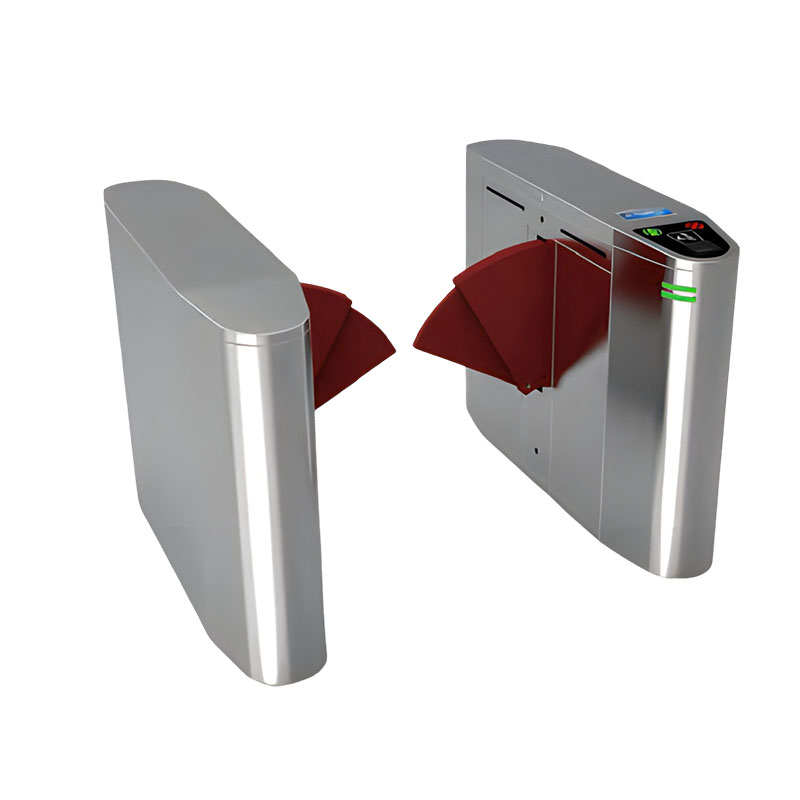How do pedestrian access gates help improve venue access efficiency?
Release Time : 2025-07-31
As a crucial component of modern security systems, pedestrian access gates not only play a key role in enhancing venue safety but also demonstrate unique advantages in significantly improving access efficiency. Through intelligent identity verification, efficient access management, and flexible system integration, pedestrian access gates provide a more convenient, efficient, and secure access management solution for various venues.
First, pedestrian access gates integrate multiple advanced identification technologies to achieve a fast and accurate identity verification process. Whether using card swipe, fingerprint recognition, or facial recognition, these technologies can quickly confirm identity and release authorized personnel. Compared to traditional manual registration or manual inspection, this method significantly reduces the time required for each pass. Users can quickly pass through the gate with a simple operation, eliminating long waits or tedious procedures, significantly improving access efficiency. Furthermore, the automated identity verification process reduces the possibility of human error, ensures that every pass is rigorously reviewed, and further enhances system reliability.
Second, pedestrian access gates can effectively cope with the pressure of peak traffic during peak hours. Efficiently managing the flow of large numbers of people in high-traffic venues such as office buildings, schools, and hospitals, especially during rush hour or special events, presents a significant challenge. Traditional manual management often struggles to keep up, leading to congestion and chaos. Pedestrian access gates, with their efficient design, can handle large numbers of people in a short period of time. Intelligent control systems dynamically adjust the speed and frequency of gate openings based on real-time traffic flow, ensuring smooth operation at all times. This flexibility not only improves overall traffic efficiency but also eliminates the inconvenience and time wasted waiting in queues.
Furthermore, pedestrian access gates are highly automated, enabling unmanned management. This not only reduces the workload of security personnel but also lowers labor costs. Traditional entrances and exits typically require dedicated personnel for inspection and registration, consuming significant manpower. Modern gate systems, however, automate all processes, from identity verification to gate opening to record storage, seamlessly and without manual intervention. This allows companies to focus their limited human resources on more critical tasks while also ensuring safe and orderly access.
Furthermore, pedestrian access gates can be integrated with other management systems to form a comprehensive security network. For example, they can link with access control systems, time and attendance systems, and even building automation systems to share information and work collaboratively. When employees pass through the gate, the system automatically records their arrival time and updates the attendance record. In emergencies, such as a fire alarm, the gate automatically switches to emergency mode, quickly opening the passage to ensure rapid evacuation. This multi-system interconnection not only improves work efficiency but also opens new possibilities for security management.
It is worth noting that pedestrian access gates are designed with user experience in mind. Modern gates are aesthetically pleasing and intuitive to operate, eliminating any hassle. Some high-end products even feature user-friendly prompts to guide users through each step. For example, when using facial recognition, the screen displays clear indicator icons, telling users when to approach the camera and whether verification is successful. Although seemingly insignificant, these design details can significantly improve the user experience in practice, making the entire access process easier and more enjoyable.
Another advantage of pedestrian access gates is their adaptability and flexibility in diverse environments. Whether indoors or outdoors, hot or cold, humid or dry, high-quality gates operate reliably, unaffected by these conditions. Manufacturers typically subject their equipment to rigorous environmental testing to ensure they maintain robust performance in a variety of extreme environments. Furthermore, different types of gates, such as swing gates, flap gates, or three-roller gates, are available to meet specific site requirements. This diverse range of options makes pedestrian access gates suitable for virtually any location, from airports and subway stations to shopping malls and museums.
Finally, with technological advancements, future pedestrian access gates will become even more intelligent. For example, with the introduction of artificial intelligence, gates will not only be able to recognize faces but also analyze behavioral characteristics to identify anomalies. They can also leverage big data analytics to optimize access strategies, predicting peak traffic flows and making corresponding adjustments. These innovations will further improve access efficiency while providing venue managers with valuable insights.
In summary, pedestrian access gates significantly improve access efficiency through optimized identity authentication, effective management during peak hours, support for automated operations, integration with other systems, a focus on user experience, and the ability to adapt to diverse environments. Each improvement is designed to provide a better user experience and demonstrates a deep understanding and respect for user needs and social responsibility. In the future, as new technologies continue to emerge, pedestrian access gates will demonstrate their unique value in even more areas, propelling the entire industry to new heights. Both emerging and established industries can benefit from these improvements, contributing to a more efficient, secure, and convenient access management system.
First, pedestrian access gates integrate multiple advanced identification technologies to achieve a fast and accurate identity verification process. Whether using card swipe, fingerprint recognition, or facial recognition, these technologies can quickly confirm identity and release authorized personnel. Compared to traditional manual registration or manual inspection, this method significantly reduces the time required for each pass. Users can quickly pass through the gate with a simple operation, eliminating long waits or tedious procedures, significantly improving access efficiency. Furthermore, the automated identity verification process reduces the possibility of human error, ensures that every pass is rigorously reviewed, and further enhances system reliability.
Second, pedestrian access gates can effectively cope with the pressure of peak traffic during peak hours. Efficiently managing the flow of large numbers of people in high-traffic venues such as office buildings, schools, and hospitals, especially during rush hour or special events, presents a significant challenge. Traditional manual management often struggles to keep up, leading to congestion and chaos. Pedestrian access gates, with their efficient design, can handle large numbers of people in a short period of time. Intelligent control systems dynamically adjust the speed and frequency of gate openings based on real-time traffic flow, ensuring smooth operation at all times. This flexibility not only improves overall traffic efficiency but also eliminates the inconvenience and time wasted waiting in queues.
Furthermore, pedestrian access gates are highly automated, enabling unmanned management. This not only reduces the workload of security personnel but also lowers labor costs. Traditional entrances and exits typically require dedicated personnel for inspection and registration, consuming significant manpower. Modern gate systems, however, automate all processes, from identity verification to gate opening to record storage, seamlessly and without manual intervention. This allows companies to focus their limited human resources on more critical tasks while also ensuring safe and orderly access.
Furthermore, pedestrian access gates can be integrated with other management systems to form a comprehensive security network. For example, they can link with access control systems, time and attendance systems, and even building automation systems to share information and work collaboratively. When employees pass through the gate, the system automatically records their arrival time and updates the attendance record. In emergencies, such as a fire alarm, the gate automatically switches to emergency mode, quickly opening the passage to ensure rapid evacuation. This multi-system interconnection not only improves work efficiency but also opens new possibilities for security management.
It is worth noting that pedestrian access gates are designed with user experience in mind. Modern gates are aesthetically pleasing and intuitive to operate, eliminating any hassle. Some high-end products even feature user-friendly prompts to guide users through each step. For example, when using facial recognition, the screen displays clear indicator icons, telling users when to approach the camera and whether verification is successful. Although seemingly insignificant, these design details can significantly improve the user experience in practice, making the entire access process easier and more enjoyable.
Another advantage of pedestrian access gates is their adaptability and flexibility in diverse environments. Whether indoors or outdoors, hot or cold, humid or dry, high-quality gates operate reliably, unaffected by these conditions. Manufacturers typically subject their equipment to rigorous environmental testing to ensure they maintain robust performance in a variety of extreme environments. Furthermore, different types of gates, such as swing gates, flap gates, or three-roller gates, are available to meet specific site requirements. This diverse range of options makes pedestrian access gates suitable for virtually any location, from airports and subway stations to shopping malls and museums.
Finally, with technological advancements, future pedestrian access gates will become even more intelligent. For example, with the introduction of artificial intelligence, gates will not only be able to recognize faces but also analyze behavioral characteristics to identify anomalies. They can also leverage big data analytics to optimize access strategies, predicting peak traffic flows and making corresponding adjustments. These innovations will further improve access efficiency while providing venue managers with valuable insights.
In summary, pedestrian access gates significantly improve access efficiency through optimized identity authentication, effective management during peak hours, support for automated operations, integration with other systems, a focus on user experience, and the ability to adapt to diverse environments. Each improvement is designed to provide a better user experience and demonstrates a deep understanding and respect for user needs and social responsibility. In the future, as new technologies continue to emerge, pedestrian access gates will demonstrate their unique value in even more areas, propelling the entire industry to new heights. Both emerging and established industries can benefit from these improvements, contributing to a more efficient, secure, and convenient access management system.







